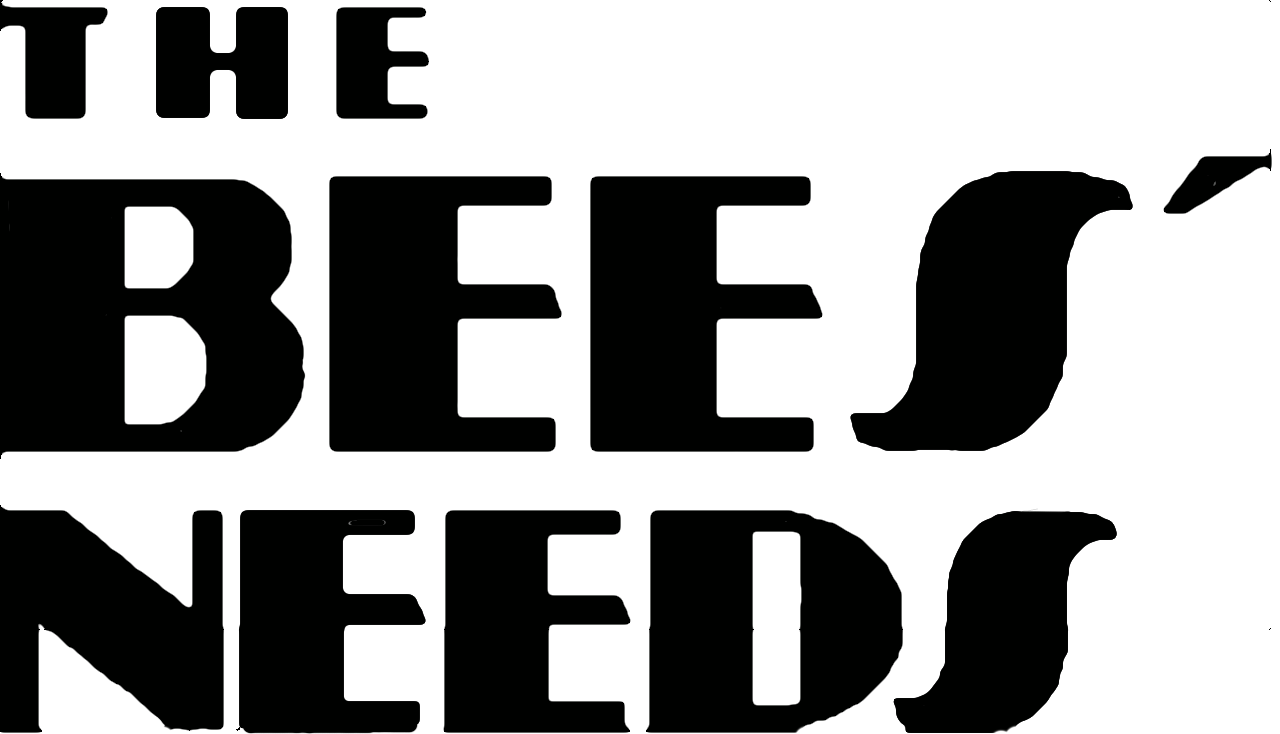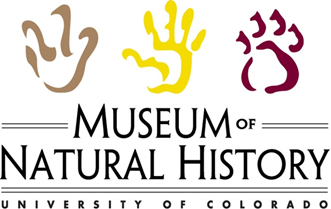The bees and wasps that nest in your bee block create nest plugs out of different material depending on the species nesting in your block. On the next few pages, there is a pictorial guide to identifying the composition of your nest plugs. We realize that some of these categories are going to be tough to distinguish. Don’t stress too much about getting it “right”. Just do your best!
The categories that we are using to describe the composition of nest plugs include:
Plant fibers - The bees that collect plant fibers stuff them into the tunnel as a plug, which looks just like cotton! Plant fibers are more compact and fluffy than a spider web would be, the only other filamenty white plug.
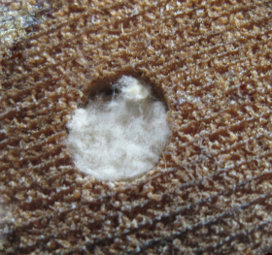
-top-
Spider Webs - Sticky, long, threadlike strands often with bits stuck in them. These usually have a narrow slit like opening, from which the inhabiting jumping spider can sometimes be seen peering out. It's important to record spiders since those tunnels are unavailable for nesting bees and wasps. These spiders can be beneficial in that they prey on some parasites that visit the bee blocks. These pictures show nest holes filled with spider webs.
Similar nest plugs are those made of silk or plant fibers, however, spider webs are springy when poked and have a messier, strand-like appearance.

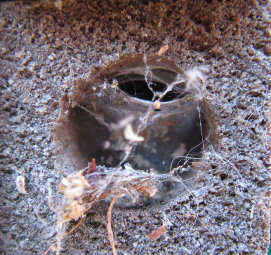
-top-
Silk - This is a papery dried salivary secretion of Hylaeus. It may be wax papery in texture or more commonly a very thin and extremely shiny film. Whitish plugs could be confused with spider webs, whereas yellowish plugs could be confused with resin. Silk plugs, however, tear easily and have a papery, filmy quality.
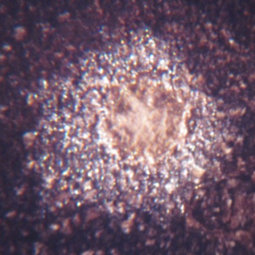
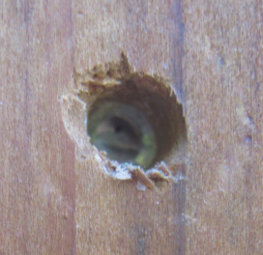
-top-
Resin (top two) or Resin with pebbles/debris (bottom two) - These are characteristically golden in color. They may be brittle or sticky, think pine sap! Some wasp species use only resin, while Dianthidium imbed pebbles or debris in their resin plugs. Fresh plugs may still carry a scent of pine. Resin plugs are thicker, often gloppy, and will not tear like silk plugs. The resin carries a golden yellow color whereas chewed vegetation is green in fresh plugs.

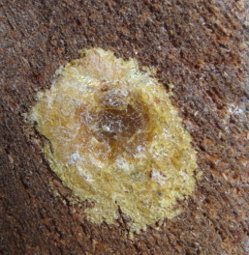
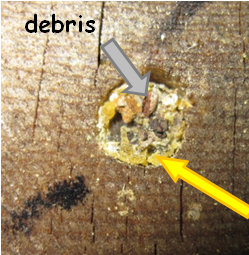

-top-
Grass blades – Appear like tiny bits of straw, shredded and stuffed into and often sticking out of, the nesting tunnels. These are unmistakable.
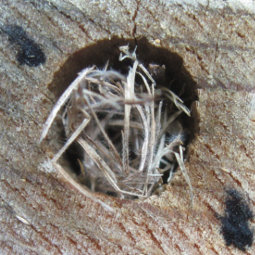
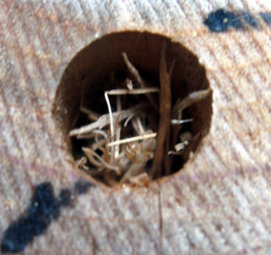
-top-
Whole leaf or flower petal pieces - Are solid circles of leaf or petal, cut by bees, carried back to the nest and fitted into the nesting tunnel to make a plug.
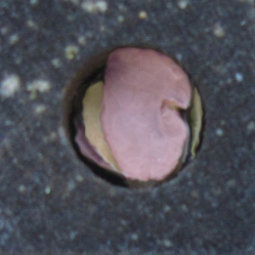

These are sometimes covered by wood or dirt, so make a note if you see these leaf pieces or bees returning to their nests with leaf pieces prior to nest completion as they are diagnostic for Megachile nests.
-top-
Chewed leaves (top) or Chewed leaves with pebbles (bottom) - Green is the key to identifying chewed leaves, though they may fade with time. Some bees add pebbles or debris into the chewed vegetation.
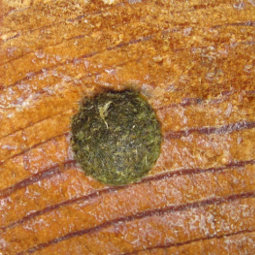

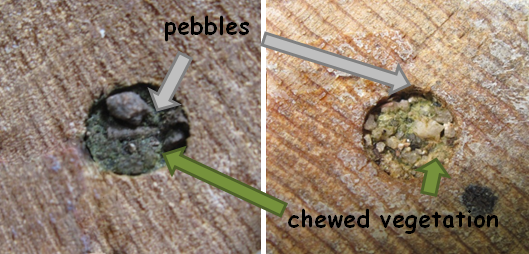
Note that plugs of chewed vegetation with pebbles are distictively green when fresh, whereas those plugs made from resin with pebbles are golden yellow.
-top-
Chewed leaves with dirt (left) or Chewed leaves with wood (right) - Look for the tell-tale green underlying color in these fresh nest plugs. Once dried these can fade and lose their green color.

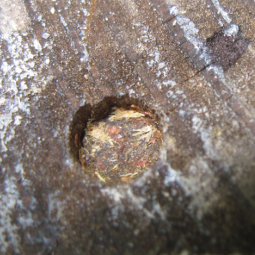
These plugs have a pasty quality unlike plugs made solely of mud (see below).
-top-
Mud (without any plant materials) - Many species use mud or an amalgamation of sand and clay to plug their nests. The key here is that these concrete-like plugs contain no vegetation at all, so no underlying green color. Mud plugs can vary from very light grey to yellow, red, brown, or dark grey depending on where the mud was collected.
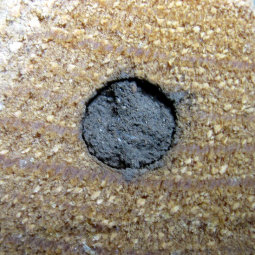
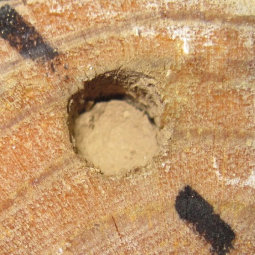
Texture in mud plugs, such as smooth or chunky are good to note as we are trying to distinguish the subtleties of mud nest plugs.
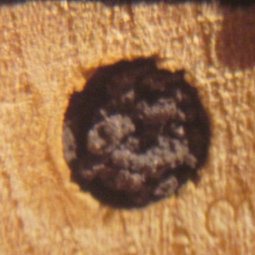
-top-
Loose debris - is used to form nest plugs for some wasp species. This LOOSE debris can be easily displaced if poked. You might confuse these with similar nest plugs that have pebbles or debris cemented in place by resin or chewed vegetation, but the loose nature of these nest plugs is the key.
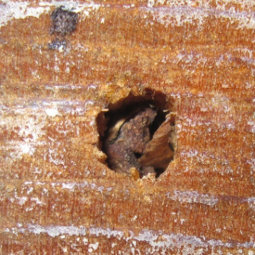

-top-
Wood - May be woven into a cap or merely packed in place. If there is any green vegetation mixed in, then record the plug as "chewed leaves with wood". Use "wood" only when the nest plug is entirely made from wood.
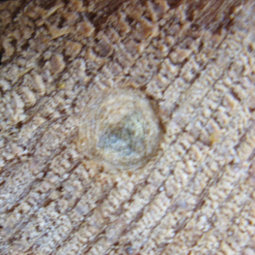
-top-
Other - miscellaneous things that may take refuge in your bee block include ladybugs, earwigs, slugs, or ants. Let us know if you see any of these!
-top-
